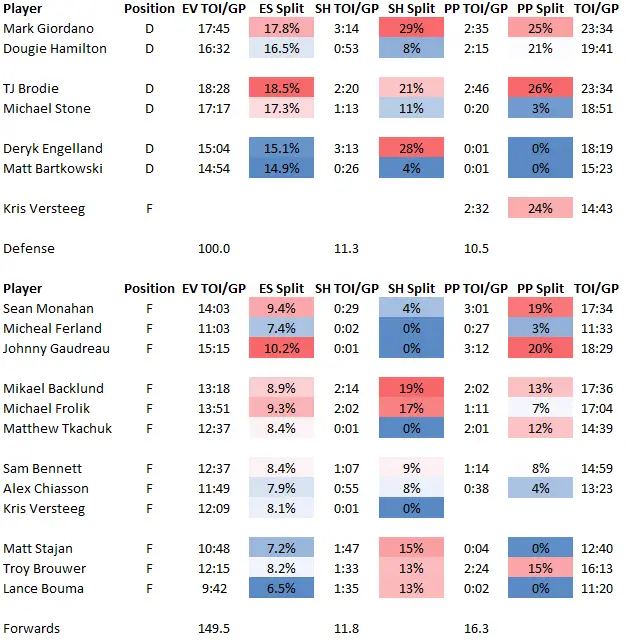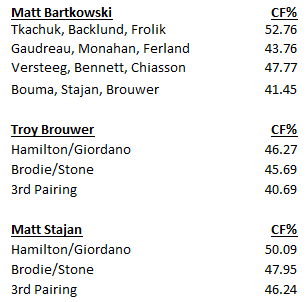When the NHL instituted a salary cap in 2005 it quickly brought the end of the idea of a perfect NHL hockey team. Every NHL team is faced with limitations in assembling a roster, you can’t put high end quality in all 20 roster spots.
The 2001 Colorado Avalanche didn’t have that problem. Up the middle they had Joe Sakic, Peter Forsberg, Stephane Yelle and Steven Reinprecht. On the wings they boasted Alex Tanguay, Milan Hejduk, Chris Drury and Adam Deadmarsh. On the blueline they had Adam Foote, Ray Bourque, Rob Blake, Martin Skoula and Aaron Milller. Of course in net they had Patrick Roy.
They had a top end of the roster for sure, but the drop off wasn’t like the cliff that today’s general managers must manage.
The winning organizations are able to find solid talent on first year contracts, either by keeping players in the AHL to blossom longer, signing key college free agents, or by doing a bang up job of scouring Europe for those rocks that need to be overturned. But even the best organizations will eventually run into trouble. The Blackhawks have been masters at turning over their roster, while the Los Angeles Kings eventually ran out of luck and hit a wall.
The Calgary Flames are coming out of a rebuild, putting the team and roster in a place of transition as they get set to open their first round series this week either in Anaheim or Edmonton. Key parts of the rebuild are going extremely well as the likes of Johnny Gaudreau, Sean Monahan, Matthew Tkachuk, Dougie Hamilton and TJ Brodie have moved into key roles at varying degrees of young age. However the rest of the roster is essentially filler with plug in players like Kris Versteeg, Alex Chiasson, Matt Bartkowski, Lance Bouma and Derryk Engelland having to play roles likely beyond their abilities for a playoff bound team. Others like Troy Brouwer have struggled despite their recent acquisition to play a more prominent role.
Splitting Up the Ice Time
However all of that is team building. It’s off season decisions, signings, trades, demotions and promotions, and will do nothing come Thursday when the puck is dropped in game one. Coach Glen Gulutzan has to take what he has; use these players in the most efficient manner possible in order to win a playoff game, a playoff round, and perhaps more.
A regular season is 82 games, it’s a grind, so a coach has to keep burn out in mind when he distributes minutes to his hockey club. However there is no tomorrow in a playoff series, there is little point in saving energy and usage for a game that may never happen.
Several years ago I was at a minor hockey coaching clinic and the guest speaker was Mike Keenan. One of his topics was ice time and managing who gets what level of ice time and how players handle it. His example was very entertaining as he retold day one at the 1987 Canada Cup for our nation. He walked into the room and stood in front of the white board and told his team they needed to figure out ice time.
He started by taking six players multiplied by 60 minutes for a total of 360 minutes. He then offered up that Grant Fuhr should probably play all game knocking the number down to 300. Then suggesting Wayne was a good player he asked how much time should he get? The group agreed 20 minutes made sense so he struck out 300 and wrote 280. As the process moved along he had 12 players off the list and ice time was dwindling out.
It was a great exercise in that it showed the highly talented fourth line that even though they were competent there wasn’t much ice time left to go around.
Glen Gulutzan has the opposite problem. He has two excellent forward lines, an elite defense pairing, and a decent defense pairing and the same 360 minutes to doll out.
Hiding the Miscast Players
This will come as a surprise to no one, but the Flames are a little top heavy when it comes to almost any metric be it counting stats or analytics.
The chart above summarized the club’s analytics with red being good and blue being bad.
The top pairing and the Backlund line are out of the world in terms of corsi and expected goals for, while the third defense pairing and the bottom two forward lines tend to get out played pretty badly. The middle defense pairing is somewhat neutral in a sense that they don’t hurt nor help the club all that much, at least in how the numbers roll out. And finally the Monahan line is somewhat positive in some metrics and has certainly improved as the season has gone on, and is gaining some trust from the coach.
You can’t hide everyone, but limiting the ice time of third defense pairing and the bottom two lines certainly would improve the average strength of the hockey team over those 50 even strength minutes.
If Gultuzan keeps the same minutes as the regular season it’s almost impossible to avoid the numerous instances where the perfect storm of weak possession players up front and on the blueline end up on the ice together and with that the team is under siege. For each period on average there are just under 17 minutes of five on five play (16 2/3), through the season the team averaged 5 3/4 minutes from the top pair, 6 minutes from the second pair and 5 minutes from the bottom pair; they essentially rolled the pairings without much deviation.
Up front in the average period, Gulutzan had the Monahan playing just over 4.5 minutes, the Backlund line taking in just under 4.5 minutes, the Bennett line playing just over 4 minutes, and the bottom group playing round 3 2/3 minutes. Like the forwards, the drop off from tier to tier was extremely small.
Glen Gulutzan likes to roll his lines.
On average the third defense pairing and fourth line only miss out on a half shift per period, amounting to a minute and a half to two minutes in the game overall (five on five).
By bumping the top two defense pairings and top two lines by 30 seconds a period he can drastically reduce the exposure to weak players both in pairings and lines, but also the number of times they are required to be on the ice at the same time.
Run the defense pairs as 9 or 9.5 shifts for the top two pairs and 6.5 shifts for the final pairing instead of the usual 8.5/8.5/8 rotation that we’ve seen all season.
Up front instead of the normal 7-6.5-6-5.5 rotation that we’ve seen, alter the bottom two trios slightly and end up with something more like 7.5-8-5-4.5 rotation.
In the heat of the battle and on the road getting matchups is very difficult, but a simple double shift twice a period can go a long way to avoid those perfect storm situations where you get 5 weak players on the ice at the same time the Ducks load up looking to take advantage.
But who are the weakest five? Which guys should the team avoid having on the ice at the same time?
Not to pick on players specifically, but I picked three players that represent the bottom part of the roster to see how they fared with the other group (forwards with defensemen, and defensemen with forwards).
Matt Bartkowski representing the third defense pairing five on five does quite well with one of the league’s best possession lines to no surprise, but actually does better with the Bennett line than the Monahan line overall, something that I didn’t expect.
Troy Brouwer has been on all the lines this year at one point or another, but has moved down the roster in the last month or so. He has trouble no matter who he plays with but clearly should never be put on the ice with the third defense pairing if at all possible.
Matt Stajan a more consistent bottom roster player this year is actually pretty static across the board. Better with Giordano and Hamilton, but has similar numbers with the second and third defense pairing.
Gas Pedal or Breaks
So now that we’re limiting ice time, and we’ve identified the hot spots for trouble in the Calgary zone it’s really up to Glen Gulutzan coaching against Randy Carlyle for when he steps on the gas, or rolls into retreat zone.
The lever he has to push or pull is the 3M line and the top defense pairing.
If he puts them together the group will dominate to the tune of 57-59% possession, almost unheard of in the National Hockey League. If the Flames had three identical lines and and three identical pairings they’d never lose a game.
However if you run the big five as a unit you know what comes next, a Monahan shift with either the middle or bottom pairing and then two straight forward lines needing help with only one getting it.
The other way to set things up is to put the 3M line out with the bottom defense pairing hoping they can help them through their shifts, and then let the dust settle with the other matchups. This of course would hurt the Backlund line in generating the time in the attacking zone they so enjoy but help significantly in keeping the Ducks at bay.
Do you apply the breaks when ahead? Load up the big five when you’re down? What do you do when the game is even?
These are all great questions and challenges for Glen Gulutzan over the next few weeks.
Then the baton gets passed back to Brad Treliving as he endeavors to improve the drop off within the roster, and make the coach’s job easier next spring.
The rebuild is winding down, hopefully this is the last playoff series to contemplate with a cliff on the roster to manage.







